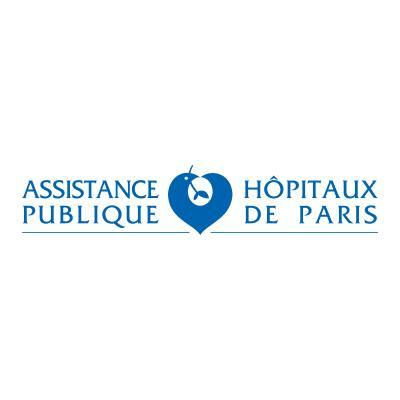预约演示
更新于:2025-12-05
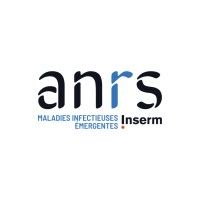
France Recherche Nord & Sud SIDA HIV-Hepatites
更新于:2025-12-05
概览
标签
免疫系统疾病
感染
泌尿生殖系统疾病
预防性疫苗
关联
2
项与 France Recherche Nord & Sud SIDA HIV-Hepatites 相关的药物靶点- |
作用机制- |
在研适应症 |
非在研适应症- |
最高研发阶段临床1期 |
首次获批国家/地区- |
首次获批日期- |
靶点 |
作用机制 env抑制剂 [+1] |
在研适应症 |
非在研适应症- |
最高研发阶段临床1期 |
首次获批国家/地区- |
首次获批日期- |
362
项与 France Recherche Nord & Sud SIDA HIV-Hepatites 相关的临床试验NCT05222945
ANRS EP69 BICTEVOIR : A Prospective Study to Determine the Cartography of Virologic Reservoir Related to Antiretroviral Concentrations in HIV-1 Chronic Patients Treated by a First Line Treatment Containing bictégravir, Emtricitabine and ténofovir alafénamide
The main objective of the study is to evaluate the diffusion of bictegravir and associated backbone (tenofovir alafenamide and emtricitabine) in HIV-1 chronic patients in the main putative reservoirs, namely inguinal lymph nodes, rectal, fat tissues and sperm.
开始日期2025-04-01 |
申办/合作机构 |
NCT06082258
Evaluation of a Training and Support Intervention for General Practitioners Managing Patients With Persistent Symptoms Following a COVID-19 Episode
Evaluation of the effectiveness of a training and support intervention for general practitioners treating patients with persistent symptoms after a COVID-19 episode on the patients'quality of life at 3 months.
开始日期2024-11-01 |
申办/合作机构 |
NCT05450770
The Yellow Fever Vaccine Immunity in HIV Infected Patients: Studies of Immunological Responses at 10 Years (ANRS 0146s NovaaTen)
ANRS 0146s NovaaTen study aims to determine the vaccine responses in the participants of the ANRS EP46 Novaa trial 10 years after a primary anti-yellow fever vaccination
开始日期2024-11-01 |
申办/合作机构 |
100 项与 France Recherche Nord & Sud SIDA HIV-Hepatites 相关的临床结果
登录后查看更多信息
0 项与 France Recherche Nord & Sud SIDA HIV-Hepatites 相关的专利(医药)
登录后查看更多信息
3
项与 France Recherche Nord & Sud SIDA HIV-Hepatites 相关的文献(医药)2020-02-01·Lancet (London, England)1区 · 医学
The complex challenges of HIV vaccine development require renewed and expanded global commitment
1区 · 医学
Review
作者: Shattock, Robin ; Russell, Nina ; Marovich, Mary ; Vekemans, Johan ; Corey, Lawrence ; Fauci, Anthony S ; Warren, Mitchell ; Bekker, Linda-Gail ; Pantaleo, Giuseppe ; Levy, Yves ; Buchbinder, Susan ; Staprans, Silvija ; Tatoud, Roger ; Gray, Glenda ; Kaleebu, Pontiano ; Johnson, Jeremiah ; Shao, Yiming ; Dabis, Francois ; Ndung'u, Thumbi ; Morris, Lynn ; Feinberg, Mark ; Makanga, Michael ; Dieffenbach, Carl ; Goodenow, Maureen M ; Johnston, Margaret I ; Kim, Jerome H ; Williamson, Carolyn ; Luba, Maureen
2018-03-19·Clinical infectious diseases : an official publication of the Infectious Diseases Society of America1区 · 医学
Retreatment With Sofosbuvir Plus Grazoprevir/Elbasvir Plus Ribavirin of Patients With Hepatitis C Virus Genotype 1 or 4 Who Previously Failed an NS5A- or NS3-Containing Regimen: The ANRS HC34 REVENGE Study
1区 · 医学
Article
作者: Métivier, Sophie ; Bellissant, Eric ; Tual, Christelle ; de Lédinghen, Victor ; Larrey, Dominique ; Tran, Albert ; Hézode, Christophe ; Jézéquel, Caroline ; Pol, Stanislas ; Bourlière, Marc ; Pailhé, Aurélie ; Zoulim, Fabien ; Renault, Alain ; Samuel, Didier ; Laforest, Claire ; Pawlotsky, Jean-Michel ; Gibowski, Séverine ; Alric, Laurent
Background:
Failure to achieve sustained virological response (SVR) with hepatitis C virus (HCV) direct-acting antiviral (DAA)-based regimens is commonly associated with emergence of resistance-associated substitutions (RASs). Retreatment of patients who failed prior DAAs remains challenging. The aim of this prospective and randomized study was to evaluate the efficacy (primary endpoint: SVR 12 weeks after end of treatment [SVR12]) and safety of sofosbuvir + grazoprevir/elbasvir + ribavirin for 16 or 24 weeks in patients who had failed to achieve SVR on previous NS5A- or NS3-based therapy and with evidence of RASs at failure.
Methods:
Patients were chronically infected with HCV genotype 1 or 4. Most of them had advanced fibrosis or compensated cirrhosis (liver stiffness 5.8-48.8 kPa).
Results:
All patients achieved HCV RNA below the lower limit of quantification (either target detected [unquantifiable] or target not detected) during treatment. SVR12 was achieved by 25 of 26 patients. The only patient who did not reach SVR was a patient who died, but HCV RNA was negative at this time (5 weeks after stopping treatment). No patient discontinued treatment because of adverse events or virological failure. Globally, treatment was well tolerated.
Conclusions:
Our findings support the concept of retreating with sofosbuvir + grazoprevir/elbasvir + ribavirin, for 16 weeks, genotype 1 or 4 DAA-experienced patients with proven NS5A or NS3 RASs.
Clinical Trials Registration:
NCT02647632.
2015-09-01·Clinical infectious diseases : an official publication of the Infectious Diseases Society of America1区 · 医学
High Cure Rate With 24 Weeks of Daclatasvir-Based Quadruple Therapy in Treatment-Experienced, Null-Responder Patients With HIV/Hepatitis C Virus Genotype 1/4 Coinfection: The ANRS HC30 QUADRIH Study
1区 · 医学
Article
作者: Anne Marie Taburet ; Melissa Coupard ; Marie-Emmanuelle Tourbillon ; Valérie Furlan ; David Rey ; Marianne L'Henaff ; François Bailly ; Jean-Pierre Bronowicki ; Eric Billaud ; Isabelle Rosa ; Zeynep Sumer ; Lionel Piroth ; Corine Vincent ; Alpha Diallo ; Pierre-Marie Girard ; Ventzislava Petrov-Sanchez ; Amar Madouni ; Jean-Michel Molina ; Antoine Cheret ; Karine Lacombe ; Isabelle Fournier ; Laurence Meyer ; Martine Resch ; Hubert Paniez ; Eric Rosenthal ; Julia Heitzmann ; Jacques Izopet ; Aurélie Barrail-Tran ; Mélanie Simony ; Jean-Pierre Aboulker ; Véronique Eliette ; for the ANRS HC30 QUADRIH Study Group ; Arulvani Arulananthan ; David Zucman
BACKGROUND:
Few direct anti-hepatitis C virus (HCV) agents have been studied in difficult-to-treat null responder and cirrhotic human immunodeficiency virus (HIV)-coinfected patients. Daclatasvir and asunaprevir combined with pegylated interferon/ribavirin (peg-IFN/RBV) have shown promising results in HCV-monoinfected patients.
METHODS:
An open-label, single-arm, phase 2 study was conducted in HIV/HCV genotype 1/4-coinfected patients who were null responders to prior peg-IFN/RBV standard therapy and on a raltegravir-based regimen with HIV RNA <400 copies/mL. They received a 4-week lead-in phase with peg-IFN/RBV, followed by 24 weeks of asunaprevir (100 mg twice daily), daclatasvir (60 mg once daily), and peg-IFN/RBV. The primary endpoint was sustained virologic response 12 weeks after the end of treatment (SVR12) using intent-to-treat analysis.
RESULTS:
Seventy-five patients were included, of whom 27 (36%) had cirrhosis. The median baseline CD4 count was 748 (interquartile range, 481-930) cells/µL. The global SVR12 rate was 96.0% (95% confidence interval [CI], 88.8%-99.2%; n = 72/75), 92.6% (95% CI, 75.7%-99.1%; n = 25/27) in cirrhotic patients, 94.6% (95% CI, 81.8%-99.3%; n = 35/37) in genotype 1 patients, and 97.4% (95% CI, 86.2%-99.9%; n = 37/38) in genotype 4 patients. Six patients (8%) stopped HCV therapy prematurely: 2 due to HCV breakthrough, 4 to adverse events (1 lung cancer, 3 infections). One patient with cirrhosis (with baseline platelet count <150 000 platelets/µL and albuminemia <35 g/L) died from multiorgan failure. Overall, 36 serious adverse events occurred in 21 (28%) patients. No HIV breakthrough was observed.
CONCLUSIONS:
In HIV/HCV genotype 1/4-coinfected null responders, a 24-week regimen combining daclatasvir, asunaprevir, and peg-IFN/RBV was associated with a very high cure rate. The safety profile was acceptable, even though cirrhotic patients with low albuminemia and platelets should be monitored closely. This combination is a new option in this difficult-to-treat population.
CLINICAL TRIALS REGISTRATION:
NCT01725542.
1
项与 France Recherche Nord & Sud SIDA HIV-Hepatites 相关的新闻(医药)2025-03-13
EnnoDC presents positive Phase I data at CROI 2025, demonstrating long-lasting immunity induced by Antibody Mediated Vaccines (AMVs)
Findings in HIV highlight AMV technology’s versatility, robust immune response, and excellent safety profile, underpinning company’s expansion into oncology applications
PARIS, France I March 13, 2025
I EnnoDC, a clinical-stage immunotherapy biotech pioneering Antibody Mediated Vaccines (AMVs), today announced the presentation of final results from the ANRS VRI06 Phase I trial (NCT04842682) at the 2025 Conference on Retroviruses and Opportunistic Infections (#CROI2025, San Francisco, USA abstract #426). Presented by
Prof. Yves Levy
,
1
the data demonstrate the ability of CD40.HIVRI.Env (AMV.HIVRI) to induce controlled, durable and potent immune responses with an excellent safety profile in non-HIV infected volunteers, further validating the transformative potential of the AMV approach in infectious diseases and cancer.
AMVs are a new class of immunotherapy that combines the targeted action of an immunomodulatory antibody with the long-lasting effect of a vaccine. Thanks to its head (a CD40 dendritic cell engager) and tail (a commutable antigen from virus or tumor), each AMV induces a specific, controlled and broad immune response.
The ANRS VRI06 trial was the first in human clinical trial assessing the safety and immunogenicity of an AMV targeting the HIV envelope in non-HIV infected human volunteers.
Results of the first phase of the ANRS VRI06 trial showed a good safety profile and strong immunogenicity of CD40.HIVRI.Env (AMV.HIVRI). These immune responses mobilized both antibody- and cell-mediated immunity and persisted until week 48, 6 months after the last boost (Y. Levy et al., EClinicalMedicine, 2024). The long-term follow-up of this study was aimed to evaluate the durability of these responses and the booster effect of a single new injection (late boost) of CD40.HIVRI.Env (AMV.HIVRI), with or without adjuvant. Results presented at the CROI 2025 demonstrated the durability of these responses in median 80 weeks after ANRS VRI06 study entry: a single boost of low dose, even un-adjuvanted, of the AMV was sufficient to extend these responses 6 months following the late boost.
“These compelling results in HIV reinforce our confidence in the AMV platform’s unique ability to deliver potent, long-lasting immune responses, making it an ideal candidate for advancing next-generation oncology therapies, particularly in HPV-induced cancers,”
said
Christophe Hubert, CEO of EnnoDC.
“These data establish a clinical proof-of-concept for AMVs in HIV, demonstrating the ability of our AMV studio to engage, prime and activate Dendritic Cells, in vivo, to drive a highly controlled and sustained immune response,”
said
Prof. Yves Levy, co-founder and Chief Scientific Officer of EnnoDC
.
“This is an important milestone, not only for our HIV program but for the broader application of AMVs in oncology, where we are actively advancing novel therapeutic options.”
Building momentum: positive Immuno-Oncology data at ESMO IO 2024
EnnoDC recently reported encouraging initial clinical data for its oncology AMV candidate CD40.HVac (AMV.HPVE6E7) at the 2024 ESMO Immuno-Oncology (IO) Congress. This novel class of immunotherapy, currently in a Phase 1/2a trial for HPV-positive oropharyngeal cancer, demonstrated:
Pioneering AMVs in Immuno-Oncology
Building on positive infectious disease results, EnnoDC is now rapidly advancing its AMV technology to cancer immunotherapy. Current Immuno-Oncology pipeline highlights include:
EnnoDC is at the forefront of the next generation of cancer immunotherapies with its first-in-class approach based on AMVs.
1
Un-adjuvanted CD40.HIVRI.Env
vaccine late boost induces durable immune responses: ANRS VRI06 trial. Yves Levy, Christiane Moog, Aurélie Wiedemann, Melany Durand, Odile Launay, Fabio Candotti, Véronique, Rieux, Lucile Hardel, Alpha Diallo, Song Ding, Mireille Centlivre, Rodolphe Thiebaut, Giuseppe Pantaleo, Jean-Daniel Lelièvre, Laura Richert. Abstract 426, CROI 2025, March 9-12, San Francisco, USA
About EnnoDC
EnnoDC is a French clinical-stage biotech pioneering Antibody Mediated Vaccines (AMVs), a novel class of immunotherapy fusing the power of antibodies and vaccines. AMV candidates engage, prime and activate Dendritic Cells
in vivo
to induce controlled, durable and potent broad immune response. The company’s versatile AMV platform, validated in infectious disease studies, is now advancing two programs in immuno-oncology.
With a strong scientific foundation, strategic partnerships, and clear regulatory pathways, EnnoDC is actively engaging investors to accelerate its lead oncology programs to clinical inflection points.
SOURCE:
EnnoDC
免疫疗法临床1期疫苗临床结果
100 项与 France Recherche Nord & Sud SIDA HIV-Hepatites 相关的药物交易
登录后查看更多信息
100 项与 France Recherche Nord & Sud SIDA HIV-Hepatites 相关的转化医学
登录后查看更多信息
组织架构
使用我们的机构树数据加速您的研究。
登录
或

管线布局
2025年12月15日管线快照
管线布局中药物为当前组织机构及其子机构作为药物机构进行统计,早期临床1期并入临床1期,临床1/2期并入临床2期,临床2/3期并入临床3期
临床1期
2
3
其他
登录后查看更多信息
当前项目
登录后查看更多信息
药物交易
使用我们的药物交易数据加速您的研究。
登录
或

转化医学
使用我们的转化医学数据加速您的研究。
登录
或

营收
使用 Synapse 探索超过 36 万个组织的财务状况。
登录
或
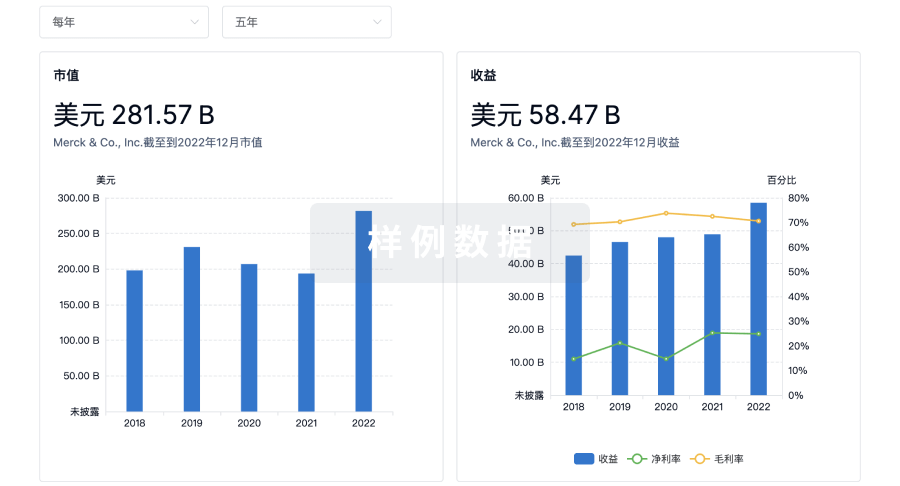
科研基金(NIH)
访问超过 200 万项资助和基金信息,以提升您的研究之旅。
登录
或

投资
深入了解从初创企业到成熟企业的最新公司投资动态。
登录
或
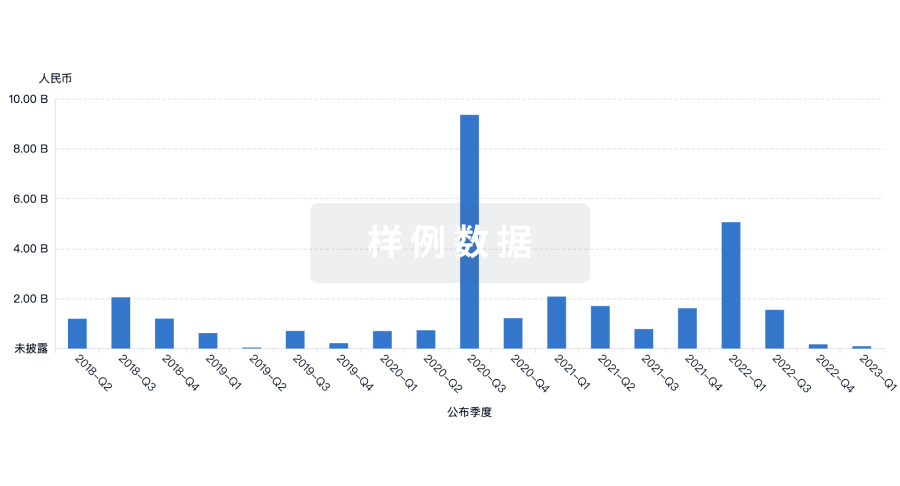
融资
发掘融资趋势以验证和推进您的投资机会。
登录
或
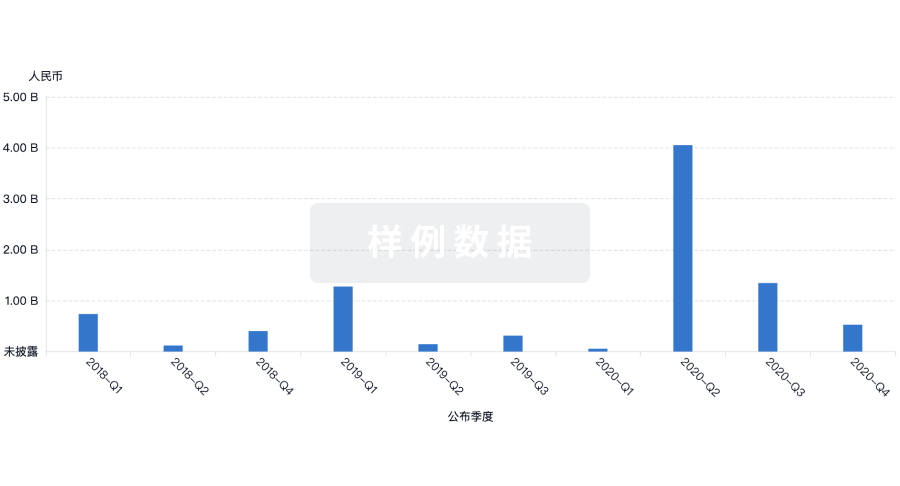
生物医药百科问答
全新生物医药AI Agent 覆盖科研全链路,让突破性发现快人一步
立即开始免费试用!
智慧芽新药情报库是智慧芽专为生命科学人士构建的基于AI的创新药情报平台,助您全方位提升您的研发与决策效率。
立即开始数据试用!
智慧芽新药库数据也通过智慧芽数据服务平台,以API或者数据包形式对外开放,助您更加充分利用智慧芽新药情报信息。
生物序列数据库
生物药研发创新
免费使用
化学结构数据库
小分子化药研发创新
免费使用

